
Learn how Sunset Elementary School in Utah transformed their approach to literacy with the SIPPS program and ongoing support and collaboration from Schools Cubed. In this blog, we interview Sunset Elementary principal Jodi Rees, district literacy coach Liz Batchelor, and Schools Cubed consultant Janell Fuller.
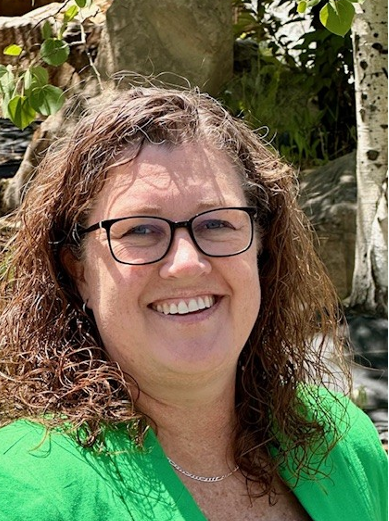
Interview with Jodi Rees, Principal, Sunset Elementary School
Tell us about yourself, Sunset Elementary School, and the community you serve.
I am Jodi Rees, and I am the Principal at Sunset Elementary School in Sunset, Utah. I have been the principal at Sunset for the past seven years, and in education for 25 years. Our school is part of Davis School District.
Sunset is a Title One school, which brings unique challenges to our teachers, students, and their families. This year, we took on all the students from a neighboring school, which closed. This changed our student population, with two-thirds of our students being new to the school.
In addition, one-third of our staff members are new to the school as well. Our student population consists of 46 percent minority students, 10 percent multilingual learners, 60% considered low income, and 11 percent considered homeless.
What do you find most rewarding in your current role, especially as you lead Sunset Elementary through a literacy transformation?
There are many rewarding things about being a school leader. Watching the excitement in students as they make good choices and learn new things is always a favorite.
Other rewarding parts of my role as principal are listening to teachers talk about their personal growth and the growth that their students are making, and making connections and building relationships with students, teachers, and families.
My personal excitement and joy around our work with literacy comes from the efforts our teachers at Sunset Elementary continue to make to embrace the science of reading in their work.
Can you walk us through Sunset Elementary’s journey of shifting to instruction based in the science of reading?
We have worked with the Utah State Board of Education and Davis School District to provide LETRS training for all our K–6 teachers. This was a big undertaking, requiring a lot of time and effort on the part of our teachers.
Our teachers jumped in and completed the training, looking for ways to implement what they were learning to improve their practices around teaching literacy. I also took the full LETRS course so I could know what my teachers were using and had better knowledge of how to support them with literacy.
Then in the Spring of 2022, I received a call from a district leader asking if I would like to be a lab school with Schools Cubed. With tears in my eyes, I gave a resounding YES! I knew that I needed to work on literacy with my staff, but I was not sure what to do. Working with Schools Cubed has provided me with the framework for improving literacy at Sunset Elementary.
Although there are many areas of great growth in literacy at our school, the greatest growth has been in me as the instructional leader. Working with our Schools Cubed consultant has provided me with intensive, personalized experience in looking at individual classroom practices and school literacy data.
My knowledge and understanding of the science of reading has improved exponentially. I can have educated conversations around literacy and how to improve together as a school.
My knowledge and understanding of the science of reading has improved exponentially. I can have educated conversations around literacy and how to improve together as a school.
What were some key planning decisions that were influenced by your collaboration with Schools Cubed? How did these decisions lead you to SIPPS and set you up for a successful implementation?
The first thing that comes to mind is the creation and use of a master schedule.
We have worked to create a schedule that staggers Tier 1 teaching times so that literacy instruction can be monitored. Each grade level, second through sixth, has a set time each day for students to receive SIPPS instruction. Students who need the extra support that SIPPS offers, work with paraprofessionals to receive the daily lessons and additional support.
Schools Cubed helped us know and understand that SIPPS was a great program to use for that intensive literacy intervention. I put trust in our consultant in that she would not tell me to use something that she did not believe in. With the support of our district, we purchased the SIPPS materials and got training for the people who would be using the program with students.
In addition, every time our consultant is in our building, we observe SIPPS lessons, provide support for our paraprofessionals, and look at specific student SIPPS data.
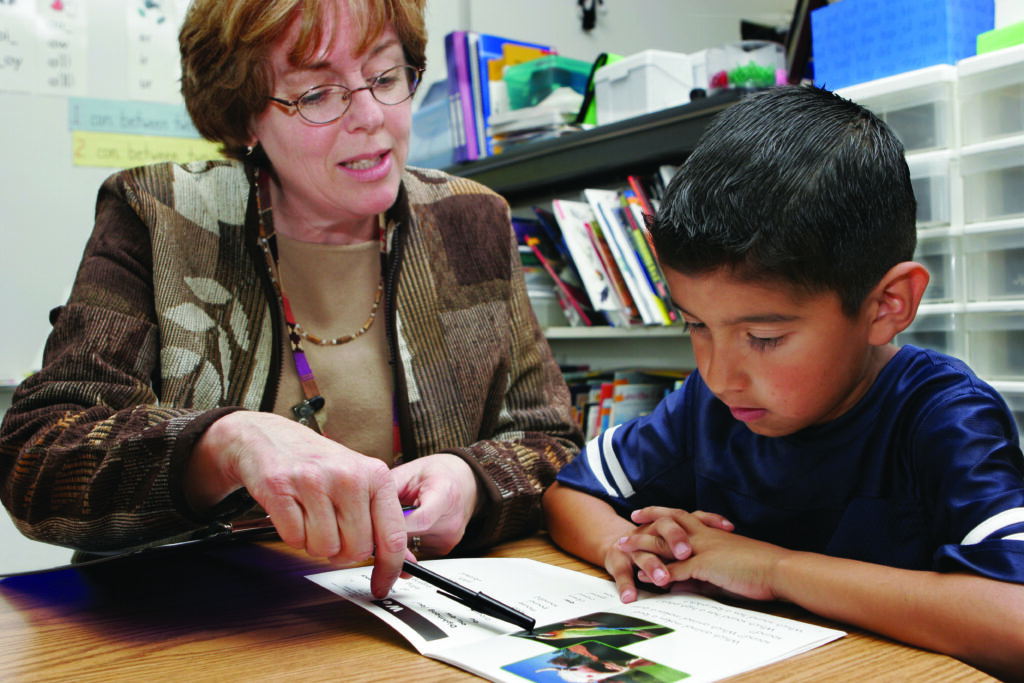
The reading data at Sunset Elementary shows incredible growth. How have SIPPS and your partnership with Schools Cubed contributed to this success?
During the 2023–2024 school year, we had a 16 percent increase in accuracy proficiency. This was a HUGE celebration for our school. Accuracy is what we look at when we choose students to participate in SIPPS. We want to get our students reading accurately before increasing their rate. This was a thought adjustment for many of us, me included, to focus on accuracy before rate.
Using SIPPS and working with Schools Cubed has increased the level of intentionality at which we look at all things literacy. Using data from our reading benchmarks, we look at individual students who are below proficiency in accuracy and ensure that they are placed in an intervention group that will best support their reading growth.
As your SIPPS implementation has matured, what long-term impacts have you noticed?
As we have looked at our beginning of year reading data, we are noticing that our students are starting at or above where they ended the previous year.
We are noticing that our students are starting at or above where they ended the previous year.
Also, fewer students need SIPPS intervention yearly as we have tighter implementation in Tier 1 instruction and interventions. I cannot say for certain that this is solely due to SIPPS, but it is helping us strengthen the reading skills of our students which will make the reading success stick.
Our students are getting more intentional repetitions around the skills taught in SIPPS which is helping close the gaps.
How has working with Schools Cubed impacted your leadership and approach to literacy?
My personal work with Schools Cubed has been one of the best individualized professional development that I have had as an Instructional Leader. I have gained a deeper understanding of the science of reading and what the best practices in literacy instruction are. That deeper understanding has increased my confidence in leading literacy efforts in my building.
As I have been able to be in classrooms observing lessons, I have had strategic conversations with teachers about how they are currently being successful in teaching literacy and areas where we need to be more intentional in our practices.
Additionally, I have a deeper understanding of the reading data we are using to track student progress and growth. Because of this, I can more adequately speak to how we should be using data to drive our instruction, all with the support of a consultant who has guided and shaped my personal learning along the way.
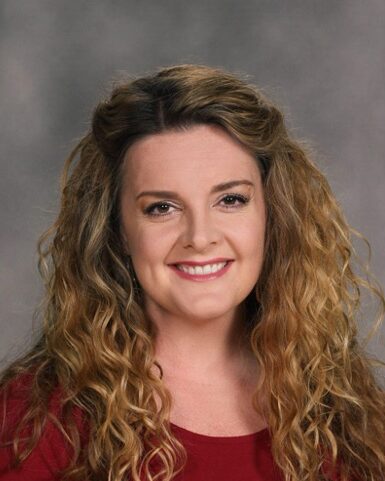
Interview with Liz Batchelor, Literacy Coach for Professional Learning Team/SIPPS
Please share about yourself and your role as a literacy coach for professional learning teams.
I’m Liz Batchelor, former literacy coach at Sunset Elementary. I was there for five years, working part time to provide training and support to teachers.
My work with SIPPS at Sunset has turned into an incredibly rewarding position in which I now get to train tutors and special education teachers in SIPPS throughout our entire district.
How has the partnership with Schools Cubed influenced your approach to literacy instruction?
Schools Cubed helped me understand the importance of a Master Schedule that allowed for enough dedicated time for literacy instruction. It has also increased my understanding of the tiers of instruction and how vital it is for students to receive a high-quality, tested intervention in conjunction with excellent Tier 1 instruction.
Finally, Schools Cubed has impressed upon me the importance of multiple repetitions, particularly for our most struggling students.
What has been the most rewarding part of your role as an educator, especially in working with SIPPS?
The success of SIPPS at Sunset Elementary has led to hundreds of students getting an intervention that is targeted to need, provides plenty of repetitions and reading opportunities, and helps build confident readers and writers.
The success of SIPPS at Sunset Elementary has led to hundreds of students getting an intervention that is targeted to need, provides plenty of repetitions and reading opportunities, and helps build confident readers and writers.
We are seeing early successes across the district and have three part-time positions known as SIPPS Success Coaches to ensure the best implementation.
Sunset Elementary has been implementing SIPPS with the support of Schools Cubed. Can you describe what this collaboration looks like in practice?
Schools Cubed has provided vital training and support in SIPPS. We could not have been successful without it! Janell Fuller was our point person from Schools Cubed. She visits us every month or two for up to three days of training.
Janell has played an integral part in teaching us how to analyze data, group students, understand SIPPS components, train tutors and special educators, and begin teaching groups.
She would allow us time to implement, then return and give us feedback and support. It was an incredibly helpful relationship! Schools Cubed has given us the tools and training to create district systems to support SIPPS in nearly every school.
How have you seen students’ learning and engagement evolve with SIPPS? Do you have a specific story you’d like to share?
There are many success stories to share! Students across the district are beginning to improve their reading abilities.
We’ve seen students complete SIPPS lessons who no longer need the intervention the next year because they test proficient in Acadience. Our students are becoming more confident readers and writers.
Those special education teachers who have been learning and implementing the program have seen wonderful growth in their students. Our most struggling students have felt success, some for the first time, and students themselves ask to go to SIPPS because they recognize they are learning to read.
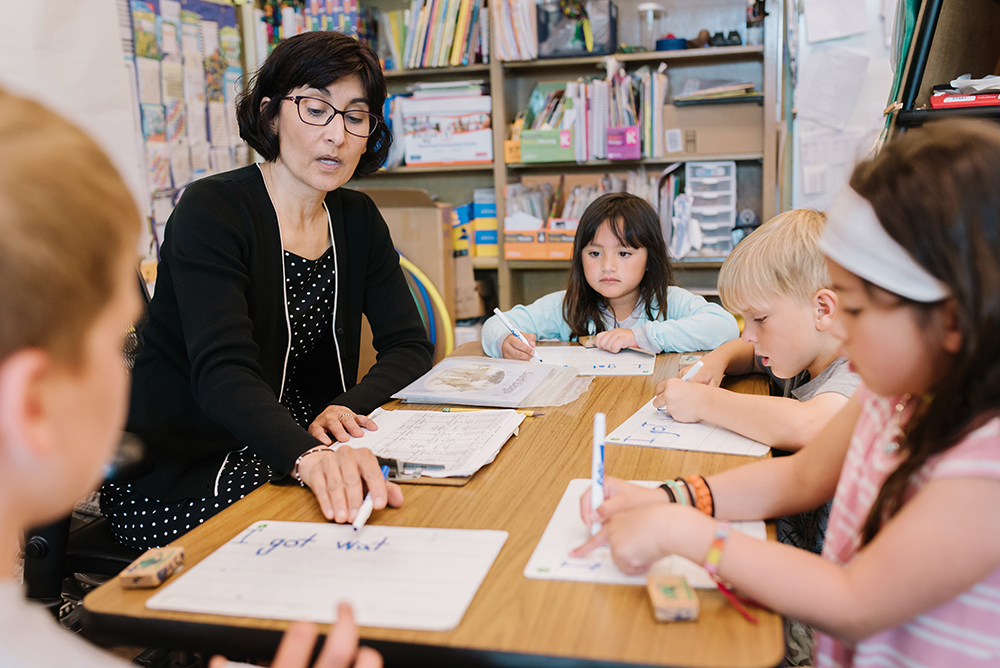
A powerful success story is about a student in special education who maintained an accuracy score of 76 percent in Acadience from first through third grade. He went years seeing no progress and, according to his mother, was growing more depressed and less hopeful every year.
After about 40 SIPPS Plus lessons in fourth grade, his scores increased to consistently 90 percent or above in accuracy. He more than doubled his fluency and comprehension scores.
He began to WANT to read, and his mother says that his improvement as a reader is contributing to confidence in many other things. This student started the final entry lesson in SIPPS Plus this year as a fifth grader and is on track to be at grade level before ending elementary school.
The trajectory of his life has changed significantly, and SIPPS is a large part of that!
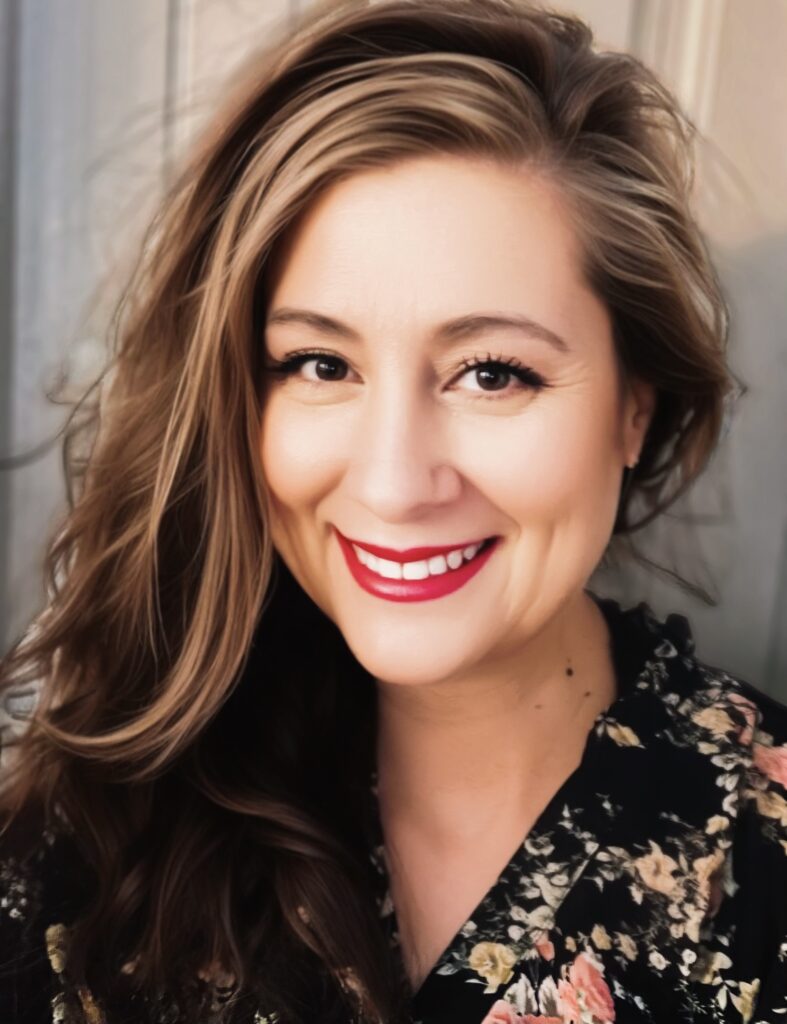
Interview with Janell Fuller, Schools Cubed Consultant
Please introduce yourself and describe your role at Schools Cubed. What regions and districts do you serve, and how has your partnership with Sunset Elementary developed over time?
My name is Janell Fuller and I am an Administrator/Literacy Consultant with Schools Cubed. I currently support schools located in Michigan, Pennsylvania, Utah, Colorado, and North Dakota.
I absolutely adore my Sunset peeps! When we first started this journey I was known as the “Schools Cubed lady.” Now they call me by my actual name.
Teachers in general tend to be a bit nervous when they know a consultant is in their building observing literacy instruction. What I have come to learn is that teachers want to be trusted and supported throughout this process.
It is difficult to have a group of people observe your instructional practices monthly, but once they see the value in the visits they are able to embrace the work because they know it is what is best for all students. Teachers start to understand the process a bit more and realize I am there to coach their leadership and not the teachers.
Get SIPPS Sample Lessons
Download lessons, text excerpts, placement assessments, and the SIPPS brochure.
Schools Cubed supports leadership to become instructional leaders. Sunset has grown to embrace this change and the teachers have definitely seen the shift in their leadership.
When I first met Sunset principal Jodi Rees, she flat-out told me, “I don’t know anything about literacy.” I told her that I would be by her side along this journey. Jodi is able to conduct her own data discussions with all grade levels and her confidence has rocketed.
What do you find most rewarding in your role, especially in supporting educators at Sunset Elementary with SIPPS?
What’s most rewarding about my role is witnessing principals/leadership blossom into confident instructional leaders. We coach leadership and in turn the principals are able to coach and support their own teachers around literacy instruction.
What’s most rewarding about my role is witnessing principals/leadership blossom into confident instructional leaders.
Leadership is the most important group of individuals to coach to become instructional leaders because they are responsible for all of their students’ success in their building. Building that knowledge around literacy is rewarding for leaders.
I also enjoy witnessing the confidence level around literacy instruction increase tremendously in the principals I coach. I have witnessed [Sunset principal] Jodi Rees jumping right in and modeling a phonemic awareness lesson so she could have a better understanding of the routines and what she is asking her teachers to do. Jodi is an amazing leader and person!
What aspects of SIPPS do you value the most, and how have you seen it impact students and teachers at Sunset Elementary?
What I value the most is the success of students! It is rewarding to see the confidence level grow in a student who has struggled in literacy.
I also value the scripted components in SIPPS. Students receive explicit and systematic instruction daily. SIPPS is designed for any individual to teach. That is key because it is commonly known schools need all the additional help they can get.
SIPPS has positively impacted Sunset Elementary students by getting them to read accurately. Students love going to their SIPPS groups because they like the expected routine in a SIPPS lesson and they become stronger readers.
Reflecting on your work with Sunset Elementary, what key strategies or planning decisions have been essential to the success of SIPPS at the school?
I have supported Sunset with the implementation of SIPPS by encouraging them to empower their own people. We want to develop a strong system to ensure sustainability in a school. We have developed a Trainer of Trainers (ToT) SIPPS team for the school district.
These individuals are in multiple schools and are the models for SIPPS lessons when other schools want to observe a SIPPS lesson prior to the program being implemented in their school. Individuals also observe the ToTs to help tighten their own delivery of instruction. The ToT team is doing an absolute fabulous job with supporting other schools with this process.
The most rewarding of all is knowing Jodi has learned what she should expect to see during a SIPPS group. She is able to ask those important questions during and after a lesson.
As you’ve observed the SIPPS implementation at Sunset Elementary over the years, what changes or growth have you noticed in the school’s literacy outcomes?
What I have noticed is the systems and structures we have supported Sunset Elementary with are truly starting to reflect in their literacy outcomes. Sunset has fewer students in a Tier 3 intervention. I have had special education teachers tell me, “Janell, I am working myself out of a job!”
I enjoy supporting schools, especially Sunset, with developing systems and structures because it is the key to their success. What we do at Schools Cubed is not solely focused on intervention but rather to guide schools in the process of developing those strong systems and structures in order to run a well-functioning and successful school.
Related Reading
A Conversation About the Science of Reading and Early Reading Instruction with Dr. Louisa Moats
Systematic, Explicit Literacy Instruction Aligned with LETRS: The Case for SIPPS
